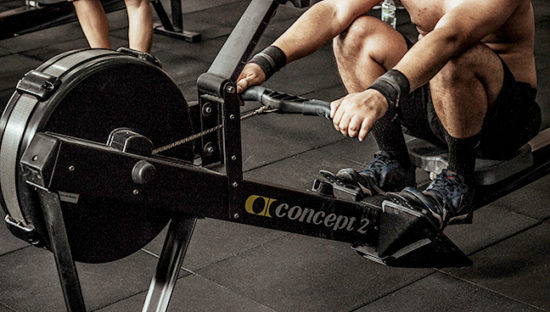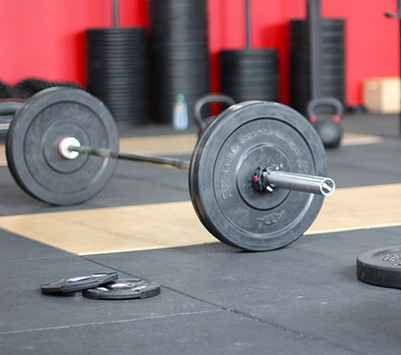Strength & conditioning: A multi-faceted profession
So you want to train athletes for a living? Here’s what you need to know.

Whether the title is in the vein of “director of sports performance” or simply “strength and conditioning,” the duties and responsibilities of the position are broad in scope and substance.
The profession has evolved to its current stage of encompassing not only the requirements of solid scientific acumen in the structure and function of the human systems and their development, but also into the realm of respected roles in leadership and mentorship for young people. The latter are obligations that the truly dedicated and committed strength and conditioning coaches embrace with enthusiasm.I receive several inquires daily about the academic requirements for getting into the strength and conditioning field and availability of full-time, graduate assistants, paid internships, unpaid/academic internships or volunteering. It seems that the number of young people gravitating to the profession is increasing each year at a rapid rate.
In light of this, I thought it might be helpful to students and current coaches who are contemplating strength and conditioning as a profession at the high school, collegiate or professional levels to expound on some personal perspectives on this career path. Additionally, administrators who are looking to fill such a position will glean some helpful information to assist in their search.
Academic background
The most important variable that ultimately validated strength and conditioning as a true profession, as opposed to a part-time occupation for those with personal or competitive experience as lifters or trainees, is the academic discipline that’s now woven into the title.
This wasn’t always the case, as there was a period during the genesis of this field when the individuals who had the best bench press, squat or power clean — and the trophies on their mantels to prove it — were systematically ordained as strength coaches.
One’s personal prowess as an athlete or competitive lifter is not itself an automatic accreditation to serve as a strength and conditioning professional. Far removed from those early days, today’s professional must undergo the rigors of a specifically designed curriculum, replete with a full complement of scientifically geared courses and practitioner-oriented activities.
For an undergraduate student embarking on an educational path with an emphasis in exercise science, and an eventual stemming into the practical elements enveloping strength and conditioning, one or more courses in each of the following subject areas is necessary:

∞ Human Anatomy and Sports Physiology: This would cover the structure, function, interactions, adaptive responses and training protocols for the skeletal, neuromuscular/connective tissue and bio-energy systems. Course emphasis should be related to applying principles to practice.
∞ Scientific and Practical Applications in Athletic Strength and Conditioning: These readings provide instruction on the whys and hows of various training protocols and systematic progressions in developing year-round training scripts for specific sports.
∞ Biomechanics of Athletic Movement (or a similar discipline within Kinesiology): This is a crucial area of study to gain perspective on how the body’s movement structures and central nervous system work in harmony to execute sports skills.
∞ Essentials of Musculoskeletal Care: Material covered here would focus on the neuromuscular system’s response to training and athletic related activities. Avoiding overtraining and grasping the processes required for recovery, rejuvenation, healing and healthy, continual progression are emphasized.
∞ Research Methodologies — Tests and Measurements in Training and Athletic Related Scientific Studies: Reading and deciphering the latest peer-reviewed scientific literature on myriad training issues is paramount for the strength and conditioning professional. To do this effectively, a course in research methodologies is a necessity.
∞ Clinical Sports Medicine/Athletic Training: Closely related to the Essentials of Musculoskeletal Care, this course provides insights on injury rehabilitation protocols. Since the strength and conditioning coach is actively involved in this process — and eventually assumes full responsibility in its latter stages — a complete understanding of these initiatives is important for the involved athlete and the productive working relationship between the training and strength and conditioning staffs.
∞ Motor Learning — Scientific Concepts and Practical Applications: The segue from developing the engine that comprises the human musculoskeletal and neuromuscular systems to that of actual sport-specific movements on the field or court requires an in-depth understanding of motor learning. Often misunderstood, misinterpreted or conceptually twisted for marketing purposes, the steps for acquiring, storing and utilizing the cognitive and neural indices of motor skill execution transcend much of the physical training performed in the strength and conditioning setting. To be proficient and adept in the differences and nuances of each area, course work in motor learning and the trademarks of true skill specificity is a mandate.
∞ Coaching and Sports Psychology: The millennium athletes and the culture that nurtures them are, to say the least, different than they were 20 years ago. The adage that “coaches coach and players play” is still in effect, but not all of the old school mentalities for the day-in, day-out approach are still effective. Studying the “neck-up” components involved with being a productive, impacting and successful coach of today’s athlete is as important for the strength and conditioning coach as it is for any other sports coach. These coaches spend more time with the athletes on a year-round basis than anyone else in the athletic program. The opportunities for mentorship and personal development are abundant. Strength and conditioning coaches should take these opportunities to heart and strive to make a daily, positive impact on the young people entrusted to them.
∞ First Aid — Injury Prevention and Care: Having a solid underpinning of knowledge in first-aid procedures and being certified in CPR and automated external defibrillator (AED) use is mandatory for strength and conditioning coaches. The situations and settings for the activities undertaken in this field always carry some unintended risks, thus making education and continual updating in this area indispensable.
∞ Electives: There is always room on your academic plate for electives, and my recommendation for just a few of the courses that can prove to be invaluable over time are as follows:
- Guidance and Counseling for Adolescents and Young Adults. Study in this area helps you with the aforementioned mentoring responsibilities and opportunities.
- Sports Administration. For a clearer picture of an administrator’s perspective on a broad spectrum of issues.
- Basic Computer Science. Most of your programming, data collection and script progressions require at least minimal computer skills.
- Sports Law and Litigation. This one just might save you a lot of trouble and embarrassment throughout your coaching career.
Finally, continued updating in drug education is crucial. This includes the misuse of over-the-counter medications, abuse of illicit street drugs and alcohol, and illegal use of the ubiquitous forms of performance enhancing drugs (PEDs).
The graduate level versions of all these areas of study are more comprehensive and include a higher degree of lab work, demand intense research-oriented readings, and are extremely heavy-handed with assigned written reports and manuscripts.
Certification
 Once you’ve been put through the fires of academia, certification with a widely recognized, accredited organization is the next step. At the collegiate and professional levels, doing so is requisite to attaining a position. In many cases, administrators at the high school and middle school levels also require both the appropriate degree emphasis and certification.
Once you’ve been put through the fires of academia, certification with a widely recognized, accredited organization is the next step. At the collegiate and professional levels, doing so is requisite to attaining a position. In many cases, administrators at the high school and middle school levels also require both the appropriate degree emphasis and certification.
Two of the most widely known and respected certifications are through the Collegiate Strength and Conditioning Association (CSCCa) and the National Strength and Conditioning Association (NSCA).
Field experience
At some point during your preparation, a position as an intern or volunteer coach is a requirement. In most undergraduate and graduate programs, an academic internship for credit hours is dictated in the curriculum. My recommendation is to include volunteer hours as your schedule permits. This affords you the opportunity to network and attain additional hands-on experience that helps you become more marketable when you’re ready to pound the pavement in search of a full-time position.
Upon receiving your BS degree, you may opt to go right into a high school job or search to obtain a graduate assistant position so as to achieve a MS degree and potentially a full-time position at the collegiate level.
As far as the collegiate situation is concerned, you must understand that the job market is flooded with applicants for all positions — interns, graduate assistants and full-time staff. So be prepared for the competition that awaits you. Education, certification, field experience, networking, a persevering attitude and presenting yourself as a knowledgeable, caring coach must be part of your résumé to even open a door for an interview.
Another obstacle you must face in working with a NCAA football program is the “5-man rule,” which permits only five strength and conditioning coaches — regardless of intern, graduate assistant or full-time status — working with the football team in strength and conditioning activities at any given time. This mandate has put a damper on staffing opportunities, especially internships and graduate assistantship programs.
Final rep
The basic construct of leadership in any endeavor is cemented with respect, trust, courage and integrity. Without this vital foundation, no organization or team can withstand the onslaught of challenges that must be faced on a daily basis. Leadership and mentorship cannot be overstated as responsibilities of educators and coaches.
The strength and conditioning coach can be a viable instrument in this process if he or she chooses to do so. In my opinion, this profession is one of the truest forms of coaching.
A sign above my office desk reflects this with the heart-searing words of Dr. Martin Luther King, Jr.: “Life’s most persistent and urgent question is: What are you doing for others?”
It is a question that all coaches should ask themselves every day.
Ken Mannie is the head strength and conditioning coach Michigan State University. His column, Powerline, appears regularly in Coach & Athletic Director magazine.


